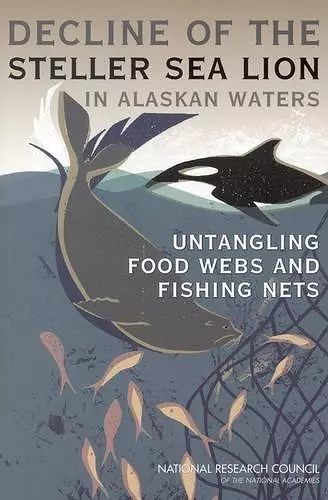Decline of the Steller Sea Lion in Alaskan Waters
Untangling Food Webs and Fishing Nets
National Research Council author Division on Earth and Life Studies author Ocean Studies Board author Polar Research Board author Committee on the Alaska Groundfish Fishery and Steller Sea Lions author
Format:Paperback
Publisher:National Academies Press
Published:4th May '03
Currently unavailable, and unfortunately no date known when it will be back

For an unknown reason, the Steller sea lion population in Alaska has declined by 80% over the past three decades. In 2001, the National Research Council began a study to assess the many hypotheses proposed to explain the sea lion decline including insufficient food due to fishing or the late 1970s climate/regime shift, a disease epidemic, pollution, illegal shooting, subsistence harvest, and predation by killer whales or sharks. The report's analysis indicates that the population decline cannot be explained only by a decreased availability of food; hence other factors, such as predation and illegal shooting, deserve further study. The report recommends a management strategy that could help determine the impact of fisheries on sea lion survival—establishing open and closed fishing areas around sea lion rookeries. This strategy would allow researchers to study sea lions in relatively controlled, contrasting environments. Experimental area closures will help fill some short-term data gaps, but long-term monitoring will be required to understand why sea lions are at a fraction of their former abundance.
Table of Contents- Front Matter
- Executive Summary
- 1. Introduction
- 2. The Environmental Setting
- 3. Identifying Clues and Testing Hypotheses
- 4. Review of Steller Sea Lion Biology
- 5. Fisheries
- 6. Steller Sea Lion Decline: Environmental Context and Compendium of Evidence
- 7. Information Needs and Recommendations
- References
- Appendix A: Committee and Staff Biographies
- Appendix B: Acronyms
- Appendix C: Glossary
- Appendix D: Early Account of Steller Sea Lions
- Appendix E: Federal Funding Summary
- Appendix F: Meeting Agendas
- Appendix G: National Research Council Project Oversight Boards
- Appendix H: Guide to the Common and Scientific Names of Marine Mammal, Fish, Invertebrate, and Bird Species
ISBN: 9780309086325
Dimensions: unknown
Weight: unknown
216 pages